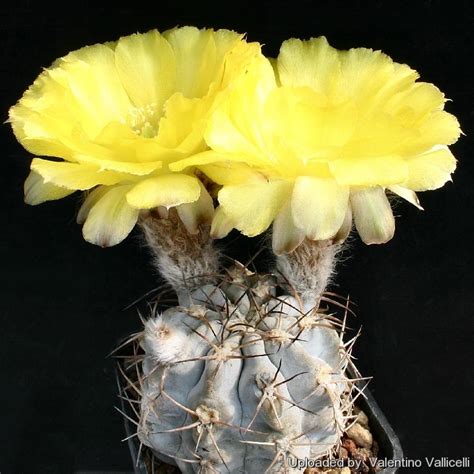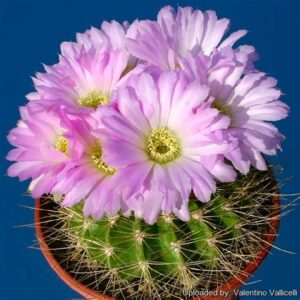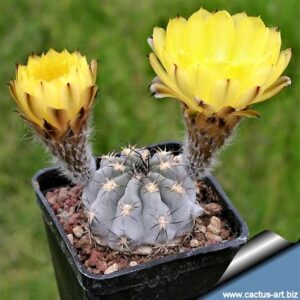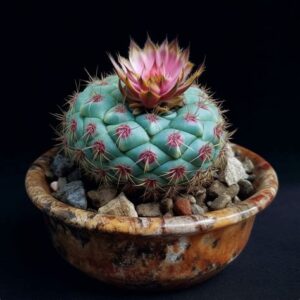All around the globe, cacti embody resilience, thriving in some of the most inhospitable terrains known to humankind. One such remarkable specimen is Acanthocalycium glaucum, a breathtaking member of the Cactaceae family. This intriguing cactus captivates aficionados and botanists alike, not just for its striking appearance but also for its captivating natural habitat. Understanding the intricate interplay of factors that define this species’ dwelling grounds reveals the unyielding spirit of nature in arid landscapes.
Home to Acanthocalycium glaucum is the arid expanses of Argentina, particularly within the confines of the provinces of San Juan and Mendoza. These regions are synonymous with an extraordinary blend of topographic nuances and climatic eccentricities that create a vibrant tapestry of flora, including a stunning display of cacti. This unique ecological milieu extends beyond mere aesthetics; it is a critical component in the survival and adaptability of Acanthocalycium glaucum, knitting together the strands of its existence.
When contemplating the natural habitat of this remarkable cactus, it is imperative to delve into the specifics of its surroundings. The semi-desert climate, characterized by low rainfall and extreme temperature variations, facilitates the growth of Acanthocalycium glaucum. Here lies a paradox as delicate as a spider’s web: the cactus thrives in the same conditions that would thwart the growth of most plants. The resilient nature of Acanthocalycium glaucum invites us to ponder how such a seemingly fragile entity can flourish in a realm defined by both scarcity and splendor.
In stark contrast to lush, verdant environments, the stark beauty of its native terrains often inspires awe. The parched earth, littered with rocky outcrops and sparsely populated by hardy vegetation, forms a canvas that showcases the life cycle of Acanthocalycium glaucum. Each flowering cycle can be seen as a testament to survival against all odds. The sporadic bursts of color during blooming seasons stand out vibrantly against the muted backdrop of dusty browns and grays, echoing the voice of resilience amidst adversity.
The Serenade of Soil: Geological Underpinnings
The soil in which Acanthocalycium glaucum takes root is a vital aspect of its habitat. Composed primarily of rocky, well-draining substrates, the soil is often a mixture of sand and silt with an admirable ability to retain moisture while preventing the detestable onset of rot—a lethal condition for many succulent species. Unlike more nutrient-dense soils, the arid substratum of its habitat is often less fertile, necessitating that the cactus possesses specialized adaptations to extract the essential minerals from the earth.
This geological landscape serves as a metaphorical crucible, tempering the iconic cactus like a blacksmith shaping steel. Layers of minerals intermingle, creating a mosaic of potential; the cactus’s adaptations transform this potential into sustenance. Acanthocalycium glaucum thrives on the edge of this minutiae, showcasing nature’s artistry in the balance of need and availability.
Weather Patterns: The Duality of Extremes
The climate around Acanthocalycium glaucum is characterized by a pantheon of extremes. The mercurial temperatures oscillate between blistering days and frosty nights, crafting an environment that poses challenges yet enhances the cactus’s intriguing adaptation strategies. Temperatures can soar to dizzying heights during the day, only to plummet after sundown—creating a rhythm to which Acanthocalycium glaucum has deftly attuned itself.
This grand symphony of extremes not only influences the growth patterns of Acanthocalycium glaucum but also highlights its ability to enter a state of dormancy during the harshest conditions. Much like a musician awaiting their moment to shine, the cactus conserves its energy, waiting for the fleeting rainfall that punctuates the dry season—much like a sudden downpour of applause after a captivating performance. This delicate balance is an exquisite reflection of the intricate dance between life and the elements, showcasing existence even amidst barrenness.
Sheltered Nooks: An Oasis of Microhabitats
Within the expansive landscape of its native range, Acanthocalycium glaucum finds sanctuary in microhabitats that shelter it from relentless winds and extreme temperatures. Boulder fields and rocky outcrops create natural alcoves where this cactus can flourish away from the glaring sun, offering a precious repository of moisture and protection from predation.
These sheltered nooks are akin to hidden sanctuaries, where the convergence of earth and stone provides a climatic refuge. Here, Acanthocalycium glaucum can absorb precious humidity from dew or distant rain, capturing moisture that often evaporates from open terrains. This interaction reflects a beautiful dance—each element contributing to the whole, creating a vibrant microcosm that supports life in the harshest of environments.
Botanical Companion: The Interconnected Ecosystem
Acanthocalycium glaucum does not exist in isolation; rather, it is intricately intertwined with the ecology surrounding it. The cactus cohabitates with a diverse array of flora and fauna, each playing an indelible role in the ecosystem. Pollinators, including bees and butterflies, are drawn to its flowers, ensuring genetic diversity. In turn, the cactus provides vital resources for the local wildlife, offering sustenance and shelter to a myriad of creatures.
This interconnectedness serves as a poignant reminder of the interdependence found in nature. The existence of Acanthocalycium glaucum is much like the finely woven threads of a tapestry—each thread vital to the integrity of the whole. Without one, the beauty and functionality of the ecosystem would inevitably decline, serving as an allegory for the fragility of life and the need for conscientious stewardship of the earth.
In conclusion, the natural habitat of Acanthocalycium glaucum is a narrative woven with complexity and beauty—a blend of harsh realities and delicate interactions. It stands not merely as a vibrant specimen against the backdrop of arid landscapes but rather as a symbol of tenacity, adaptation, and the fundamental interconnectedness of life. The cactus invites an appreciation for both the starkness of its native terrain and the splendid resilience that thrives within it. Acanthocalycium glaucum serves as a reminder that even in the harshest of environments, life not only persists but flourishes in profound and unexpected ways.





Leave a Comment